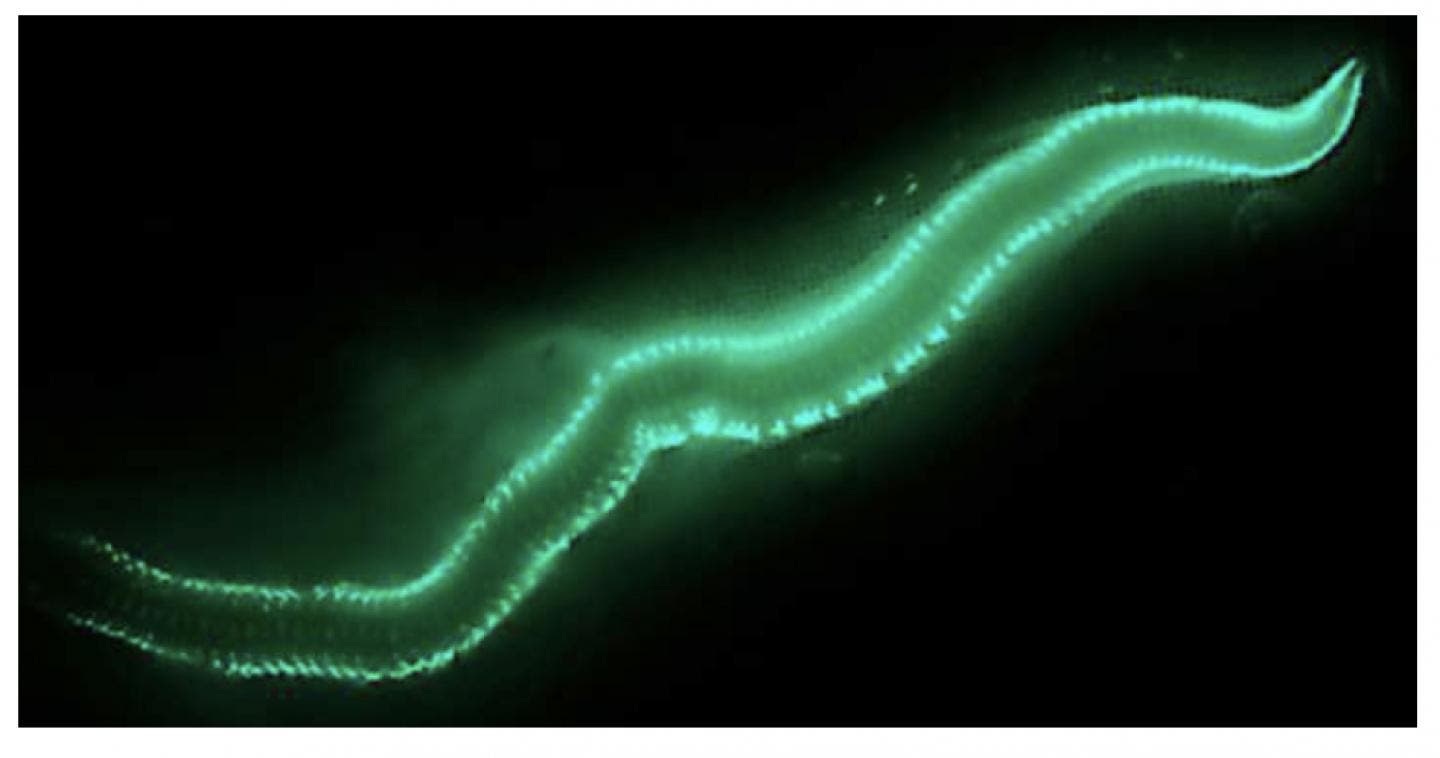Bermuda fireworms (Odontosyllis enopla) were described by Christopher Columbus in 1492 as “looking like the flame of a small candle alternately raised and lowered.” These worms glow a striking green-blue color before mating. Researchers from the American Museum of Natural History looked at this phenomenon on a molecular level to see what exactly causes these fireworms to glow.
The fireworms only glow during the mating season. The females have a spookily accurate sense of time and always start to glow a blue-green color 22 minutes after sundown on the third night after a full moon, throughout the summer and autumn. The tantalizing glow then attracts the males.

“The female worms come up from the bottom and swim quickly in tight little circles as they glow, which looks like a field of little cerulean stars across the surface of jet black water,” said Mark Siddall, a curator in the American Museum of Natural History’s Division of Invertebrate Zoology and corresponding author of the study. “Then the males, homing in on the light of the females, come streaking up from the bottom like comets–they luminesce, too. There’s a little explosion of light as both dump their gametes in the water. It is by far the most beautiful biological display I have ever witnessed.”
The researchers analyzed the full set of RNA molecules from twelve female Bermuda fireworms. They found that the worms glow due to a luciferase enzyme. Although luciferases are already known to be responsible for bioluminescence in many organisms — such as copepods, fungi, and jellyfish — this particular enzyme is new! It is especially exciting that this particular enzyme has never been seen before, because it could potentially be used as a tagging molecule in biomedical research, to track the movement of certain factors in cells, for example.
The researchers were also interested in how the timing of the mating display may be linked to other physical or genetic changes in the worms. Just before mating, the worms prepare themselves by enlarging their eyes and modifying the organ that stores and releases gametes. After mating, these changes reverse themselves. These worms are pretty fascinating, and perhaps the most punctual maters of all time! It would be interesting to learn more about the genetic cues for beginning the glowing process.






